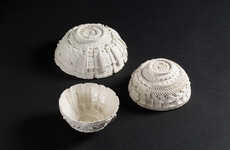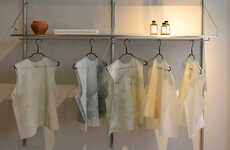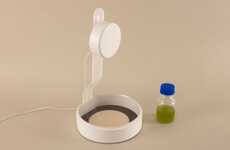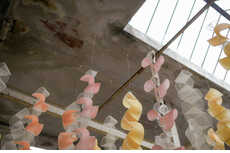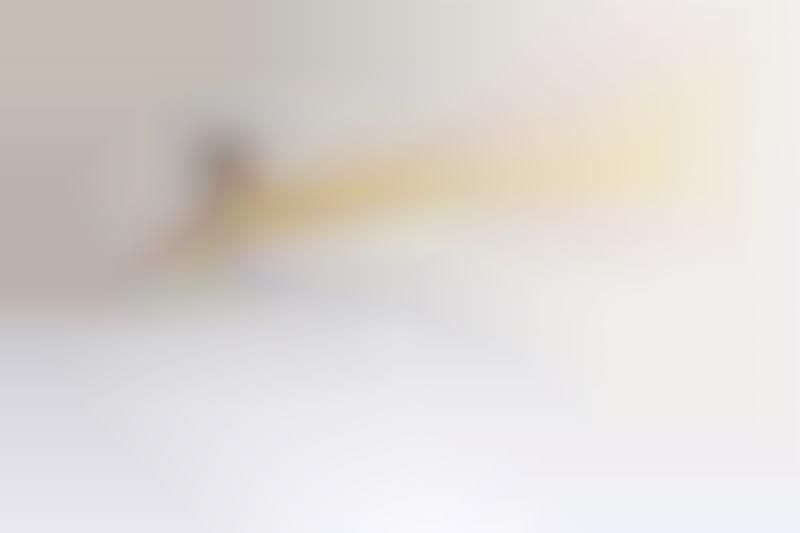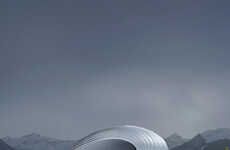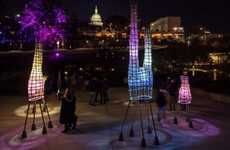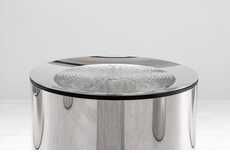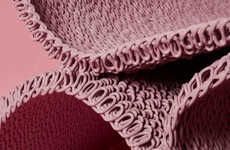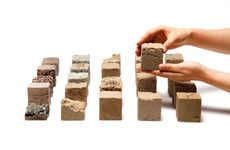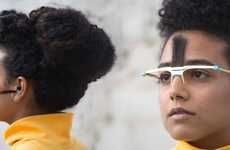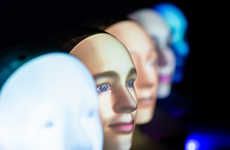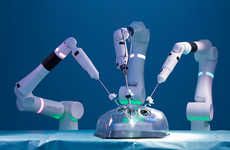Neri Oxman's Project Builds from Aqueous Material Form
Kalina N — May 16, 2018 — Art & Design
References: matter.media.mit.edu & behance.net
In her water-based digital fabrication platform project, architect and professor Neri Oxman embraces water as nature's architectural tool and restructures the way we perceive aqueous manufacturing through the combination of "age-old crustacean-derived material with robotic fabrication and synthetic biology."
Neri Oxman and her team make use of a robotically controlled extrusion system and a computational workflow for the direct digital fabrication and hydration-guided self-assembly of "multi-material and multi-scale structured objects."
The Water-Based Digital Fabrication Platform uses a derivative of a renewable polymer, called chitin, in the printing process. The formation of the objects post materialization is guided by evaporation patterns and controlled wrinkling. Each new object is moldable by contact with air, as well as biodegradable by water. In addition, Neri Oxman and her team add a coat of Cyanobacteria, in order to bring additional properties to the objects, such as "water resistance and conductivity."
Neri Oxman and her team make use of a robotically controlled extrusion system and a computational workflow for the direct digital fabrication and hydration-guided self-assembly of "multi-material and multi-scale structured objects."
The Water-Based Digital Fabrication Platform uses a derivative of a renewable polymer, called chitin, in the printing process. The formation of the objects post materialization is guided by evaporation patterns and controlled wrinkling. Each new object is moldable by contact with air, as well as biodegradable by water. In addition, Neri Oxman and her team add a coat of Cyanobacteria, in order to bring additional properties to the objects, such as "water resistance and conductivity."
Trend Themes
1. Water-based Digital Fabrication - Disruptive innovation opportunities lie in the development of new materials and fabrication techniques that harness the power of water for sustainable and customizable manufacturing.
2. Robotic Fabrication - Disruptive innovation opportunities can be found by integrating advanced robotic systems into the manufacturing process, enabling precise and efficient production of complex structures.
3. Synthetic Biology in Manufacturing - Disruptive innovation opportunities arise from incorporating synthetic biology techniques into the fabrication process, allowing for the creation of materials with enhanced properties and functionalities.
Industry Implications
1. Architecture - The architectural industry can explore the use of water-based digital fabrication platforms to create environmentally friendly and customizable structures.
2. 3D Printing - The 3D printing industry can integrate robotic fabrication techniques and explore the use of water-based materials to expand the capabilities and sustainability of additive manufacturing.
3. Biotechnology - The biotechnology industry can leverage synthetic biology in manufacturing to develop novel materials with unique properties and applications.
5.7
Score
Popularity
Activity
Freshness

